The weapon triangle is an enduring Fire Emblem tradition that has waxed and waned in importance over the years, being a relatively minor part of Fire Emblem Three Houses. It has returned with a vengeance in Fire Emblem Engage thanks to the Break status. This page will explain the weapon triangle, including details on how to inflict break, and how to perform chain attacks, and will cover weapons with enhanced effectiveness against different types of foes.
The Weapon Triangle Explained¶
The weapon triangle in Fire Emblem is a simple roshambo mechanic, where one weapon type is strong against another weapon, but weak to a third. The three major categories of weapons in Fire Emblem Engage are swords, lances and axes:
- Swords have advantage against axes, but disadvantage against lances.
- Lances have advantages against swords, but disadvantage against axes.
- Axes have advantage against lances, but disadvantage against swords.
In addition to the weapon triangle, arts have advantages over bows, tomes and daggers.
Most characters only have access to one of two types of weapons, limiting their ability advantage coverage. Emblems can grant a character access to additional weapons beyond whatever weapons a character’s class alone would normally enable them to use, so consider these when assigning Emblem Rings
(1 of 2) If you attack an enemy with a weapon that has advantage (swords over axes, axes over lances, lances over swords) you’ll inflict break, preventing counterattacks.
If you attack an enemy with a weapon that has advantage (swords over axes, axes over lances, lances over swords) you’ll inflict break, preventing counterattacks. (left), In addition to the weapon triangle, arts will break tomes, bows and daggers. (right)
How to Inflict Weapon Break in Fire Emblem Engage¶
If a character initiates combat and their weapon has advantage over their enemy’s weapon, they may inflict the break status on their enemy. When inflicted with break, a stricken character’s weapon will be knocked out of their hands, preventing them from performing counterattacks for the rest of that combat encounter and the next engagement. While the character afflicted with break can still dodge, their inability to counterattack allows other characters to safely attack them.
Note that armored enemies may resist break from weapons dealing physical damage, regardless of the amount of damage dealt. In these cases you may have to use magic weapons to properly inflict break. In other words, a ![]() Steel Sword may not inflict break on an armored foe, but a
Steel Sword may not inflict break on an armored foe, but a ![]() Levin Sword might.
Levin Sword might.
(1 of 2) In addition to the weapon triangle, magic attacks deal heavy damage to armored foes,
In addition to the weapon triangle, magic attacks deal heavy damage to armored foes, (left), and bows deal massive damage to fliers. (right)
Weapon Effectiveness in Fire Emblem Engage¶
Some weapons are stronger against specific types of enemies, and will deal significantly increased damage when used against these foes. Some of these are obvious bonuses that affect an entire class of weapons, like the time honored tradition of bows being especially lethal against fliers, but others are more edge cases, like specific weapons in a class that are strong against a specific type of foe, like the ![]() Armorslayer being effective against armored foes. Other examples includes:
Armorslayer being effective against armored foes. Other examples includes:
| Weapon | Effective |
|---|---|
| Armored | |
| Bows | Flying |
| Flying | |
| Flying | |
| Armored | |
| Flying | |
| Cavalry | |
| Ridersbane | Cavalry |
| Flying | |
| Dragon |
The list above doesn’t include Emblem Weapons, which often have enhanced effectiveness against various enemies. Consider swapping out Emblem Rings at the start of battles, after you see what enemies await you to ensure your front-liners have weapons that’ll be effective - or at least, not disadvantageous - against the foes they’ll be facing. It’s also worth noting that while armored enemies tend to be weak against magic, this isn’t a matter of advantage or effectiveness, but rather simple math - armored enemies tend to have high DEF and low RES, so weapons that deal MAG-based damage will be opposing a weaker stat.
Followup Attacks and Counterattacks in Fire Emblem Engage¶
Picking a fight in Fire Emblem is always a risky proposition - unless you outrange your opponent, or your enemy is incapacitated somehow, they will get a chance to respond in the same combat encounter. The attacking character will usually strike first (unless some skill precludes this), after which the defending character will get to counterattack. If the attacking character inflicts break, the defender will be prevented from counterattacking, making it much safer to attack enemies if your weapon has advantage.
In addition, if a character - attacker or defender, it doesn’t matter - has a SPD advantage of 5+, they will get to perform a free followup attack, which is a second full strength attack, usually performed after the counterattack. Characters inflicted with break aren’t entitled to followup attacks. Since followup attacks effectively double a character’s damage output, SPD is a very, very potent stat, indeed.
Smash weapons forfeit the opportunity to attack first or perform followup attacks, but can deal tremendous damage and knock foes back.
Smash Weapons in Fire Emblem Engage¶
Some larger, heavier weapons buck the trends, above, and cede attack order and the ability to perform followup attacks in order for massive damage potential. These weapons, like blades and greatlances, tend to have a very high Might (MT) score and Weight (WT) modifier, and while equipped with them you will always attack last in combat, and can only attack once, regardless of your comparative SPD score. These weapons are useful for low SPD, high STR characters who, in other games, would be simply outclassed by speedier counterparts.
In addition to the above perks and liabilities, smash weapons can inflict the smash status on hit, driving enemies back one tile on the map after combat is resolved. If the enemy is knocked into other objects - walls, other units, etc, - they will take extra damage. Smash weapons otherwise function like any other weapon and fall into the same three categories, sword, lance and axe, and can inflict Break, accordingly.
Magic weapons deal damage based on a character’s MAG score, and against high DEF enemies they may be preferable to normal weapons.
Magic Weapons in Fire Emblem Engage¶
Some weapons deal magical damage, and hence scale off a character’s MAG stat instead of the normal STR stat, which determines physical damage. Tomes as a class inflict magical damage, but other specimens include the Levin Sword (also unique for being one of the only ranged options in the sword category), the ![]() Flame Lance, the
Flame Lance, the ![]() Hurricane Axe (which isn’t just a magical weapon but a smash weapon, too!), the
Hurricane Axe (which isn’t just a magical weapon but a smash weapon, too!), the ![]() Radiant Bow and the
Radiant Bow and the ![]() Misericorde.
Misericorde.
Aside from dealing magical damage and scaling off a character’s MAG stat, these weapon function like normal weapons of their type. The Levin Sword has advantage against axes and disadvantage against lances, for example, and only classes capable of wielding swords can use Levin Swords - even the most dimwitted ![]() Swordmaster can squander the weapon’s potential, while the keenest
Swordmaster can squander the weapon’s potential, while the keenest ![]() Sage cannot. Magical weapons can inflict break on armored enemies, whereas physical damage dealing variants may not be able to do so. Some characters with similar growth rates in STR and MAG may want to bring a physical damage weapon and a magical damage weapon along to use against different foes as their DEF and RES warrant. For example,
Sage cannot. Magical weapons can inflict break on armored enemies, whereas physical damage dealing variants may not be able to do so. Some characters with similar growth rates in STR and MAG may want to bring a physical damage weapon and a magical damage weapon along to use against different foes as their DEF and RES warrant. For example, ![]() Chloé has slightly higher MAG growth than STR, and she’d be well served by bringing a
Chloé has slightly higher MAG growth than STR, and she’d be well served by bringing a ![]() Javelin along for low DEF enemies, and a Flame Lance to deal with armored foes.
Javelin along for low DEF enemies, and a Flame Lance to deal with armored foes.
(1 of 2) If a backup class is within range when another character attacks - in this case, !Lapis is in range of the enemy !Yunaka is attacking,
If a backup class is within range when another character attacks - in this case, !Lapis is in range of the enemy !Yunaka is attacking, (left), the backup character will jump in and perform a Chain Attack. (right)
Chain Attacks in Fire Emblem Engage¶
Some classes are designated Backup Classes, including Axe fighters, ![]() Berserkers,
Berserkers, ![]() Halberdiers, Heroes,
Halberdiers, Heroes, ![]() Lance Fighters, Lords,
Lance Fighters, Lords, ![]() Pickets,
Pickets, ![]() Royal Knights, Sentinels,
Royal Knights, Sentinels, ![]() Successeurs,
Successeurs, ![]() Sword Fighters, Swordmasters and
Sword Fighters, Swordmasters and ![]() Warriors. When an ally initiates an attack against an enemy the Backup class is within attack range (not movement range) of, they’ll perform a chain attack, joining in on the combat encounter to make a free attack.
Warriors. When an ally initiates an attack against an enemy the Backup class is within attack range (not movement range) of, they’ll perform a chain attack, joining in on the combat encounter to make a free attack.
Chain attacks are different from normal attacks, typically having an 80% chance to hit regardless of the enemy’s AVO and dealing significantly reduced - but flat - damage, again, regardless of the enemy’s DEF or RES. While you can’t count on a single chain attack to deal much more than chip damage, if you place a Backup character (or several!) next to a strong enemy at the start of a turn, you can proc multiple chain attacks with these characters in a single turn. It adds up. Unfortunately, the same goes for your enemies, and since chain attacks deal reliable (if relatively minor) damage with a decent chance of hitting, numerous enemies can gang up on an otherwise tanky character and slowly bring them down.
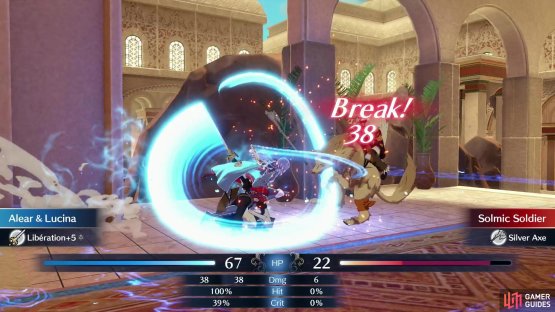



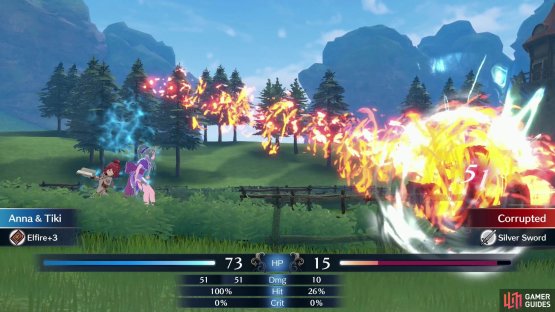

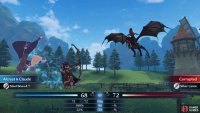

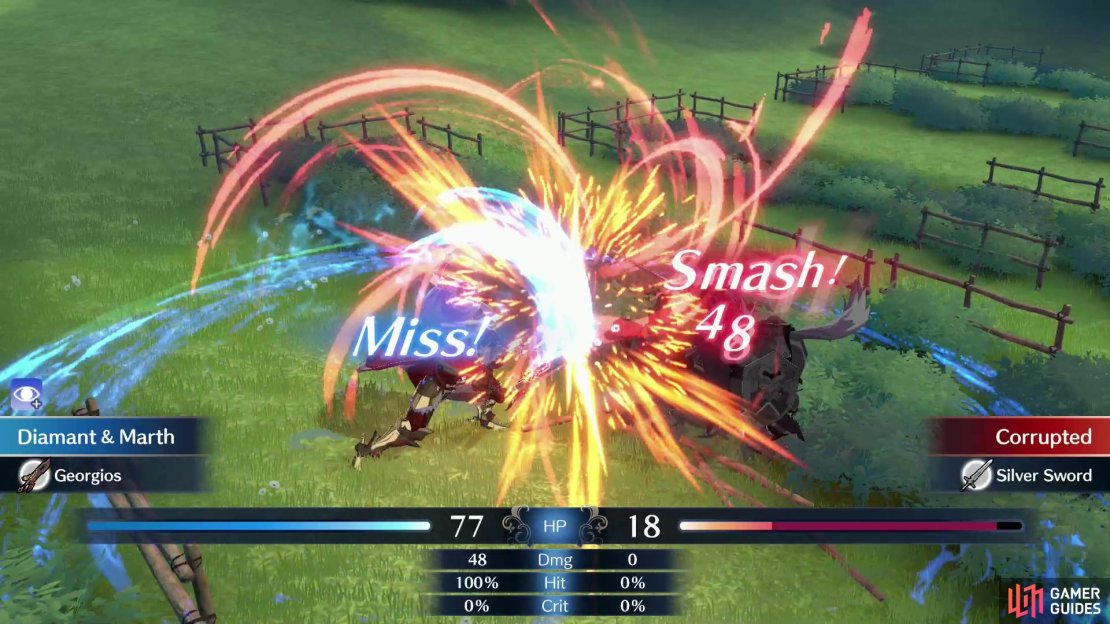
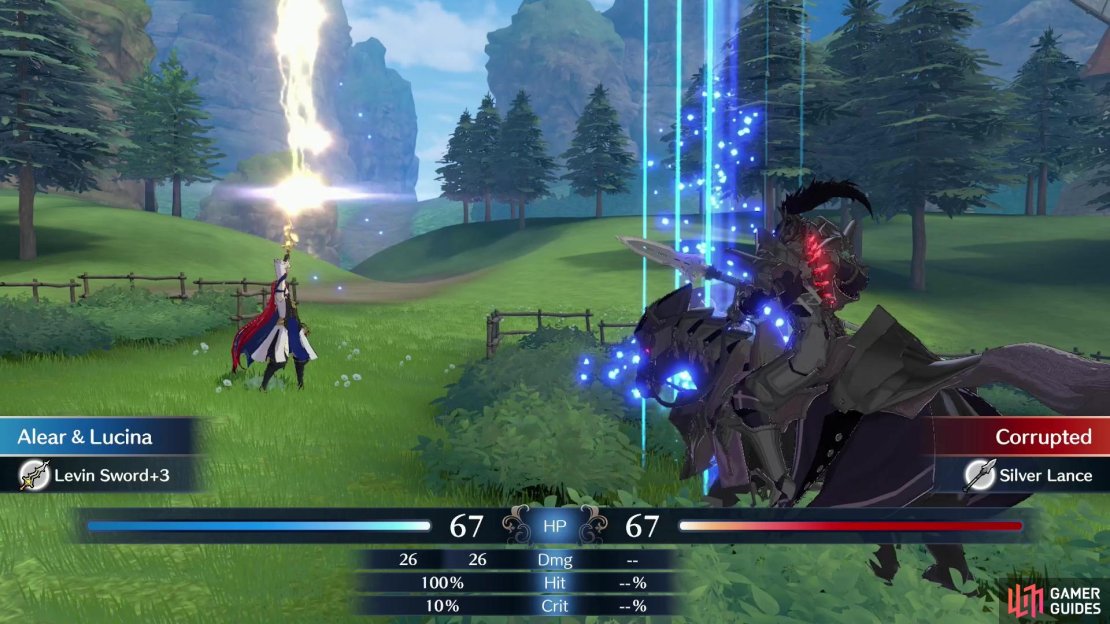
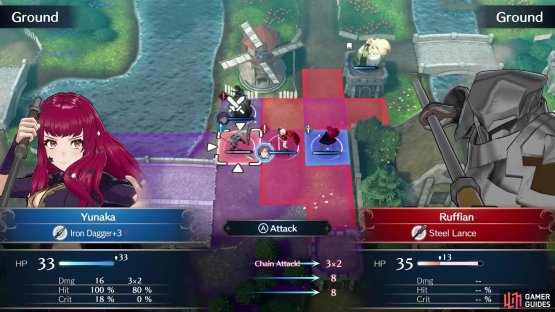

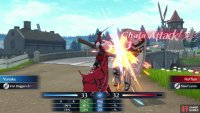

No Comments